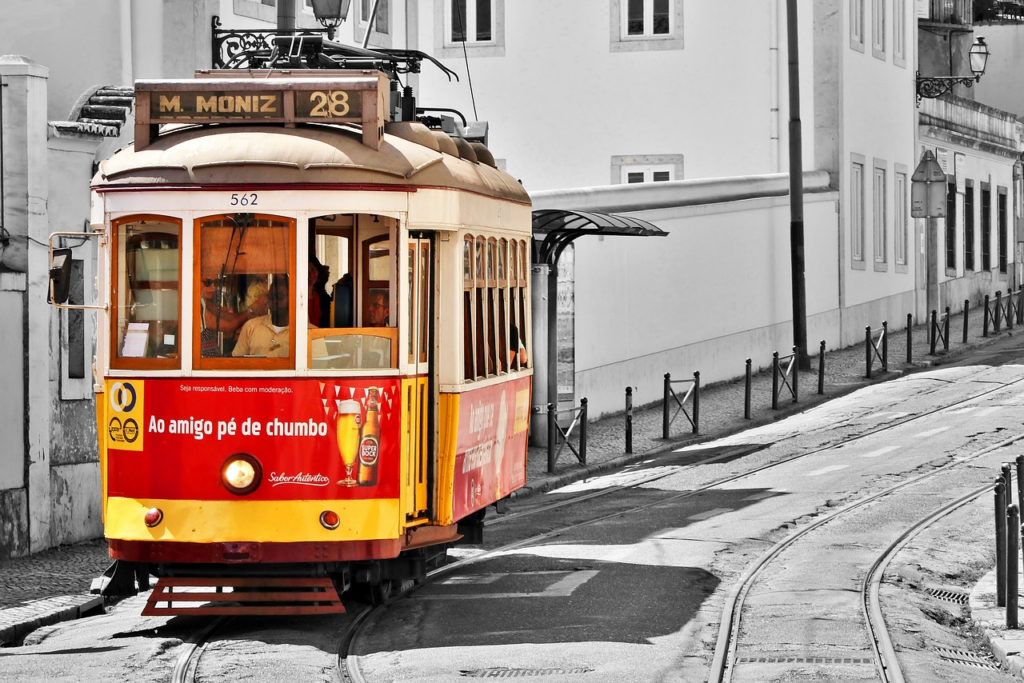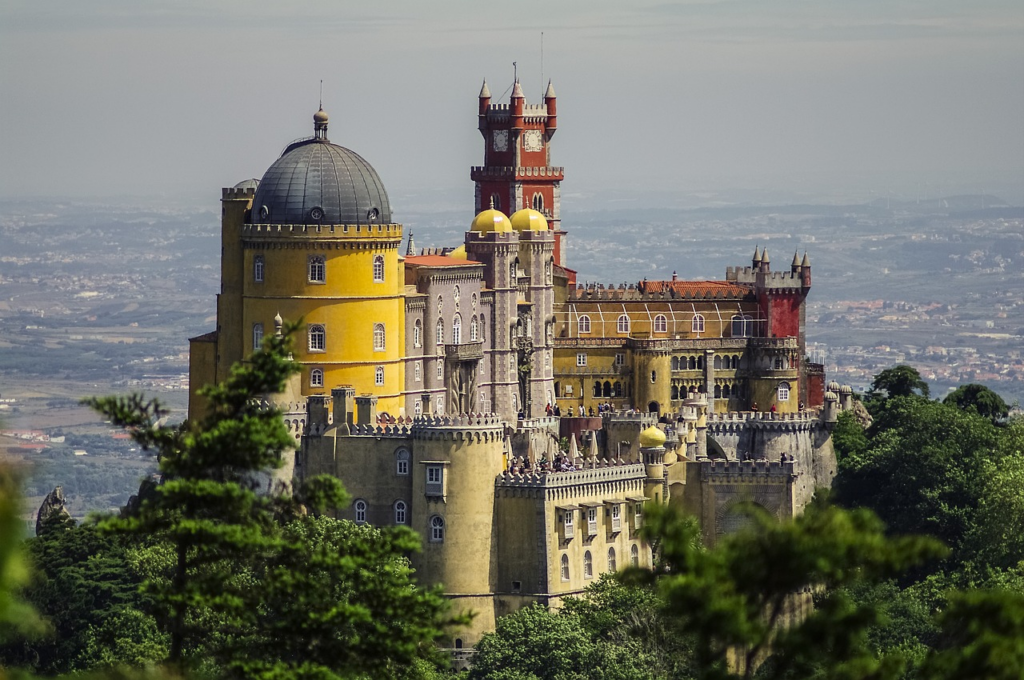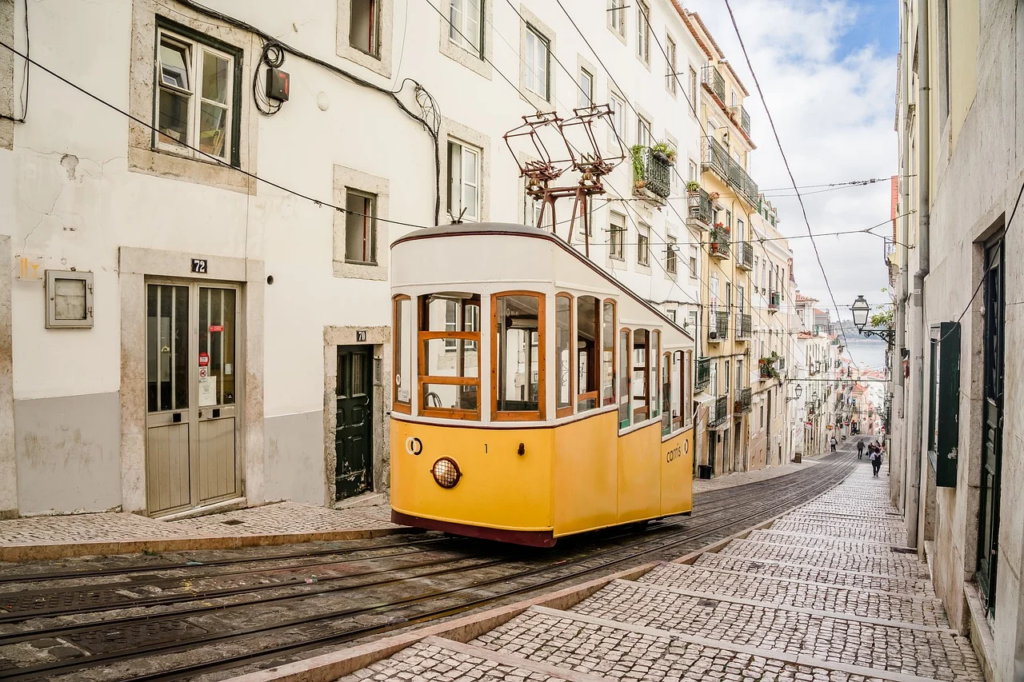Advertisement
If you're planning a trip to Portugal, you're about to embark on a journey filled with history, culture and stunning landscapes. This comprehensive guide will provide you with all the information you need to plan your dream trip to this enchanting destination.
How Many Hours to Arrive in Portugal?
The duration of a trip to Portugal will depend on your departure location. If you are traveling from other European countries, the flight time will be relatively short. On average, direct flights from cities like London, Paris or Madrid to Lisbon or Porto can take between 2 and 3 hours.
Advertisement
However, if you are coming from other continents, such as North America, South America or Asia, the flight time will be significantly longer. Direct flights from cities like New York, São Paulo or Beijing to Lisbon can take between 7 and 10 hours, depending on weather conditions and flight routes.
It is always advisable to check flight times and connection options to find the best route and the most convenient travel time for you.
Advertisement
What to do in Portugal?
Portugal is a country rich in history, culture and natural beauty. Here are some of the main attractions and activities to include in your itinerary:
Lisbon
Lisbon, Portugal's stunning capital, is a city where historic charm blends harmoniously with a modern, cosmopolitan vibe. On the banks of the River Tagus, this city enchants visitors with its picturesque hills, cobbled streets, magnificent architecture and vibrant cultural scene.
1. Alfama: The Historic Heart of Lisbon
Alfama is Lisbon's oldest neighborhood, a maze of narrow streets and winding staircases dating back to Moorish times. Here, you can get lost in the picturesque alleyways, discovering old churches, craft stores and miradouros (viewpoints) with breathtaking views over the city and the river. Don't miss the Castelo de São Jorge, an 11th century Moorish fortress that offers unforgettable panoramas of Lisbon.

2. Bairro Alto: Nightlife and Alternative Culture
At night, Bairro Alto comes alive with lively bars, cozy restaurants and traditional fado houses. This bohemian neighborhood is the perfect place to enjoy authentic Portuguese music, known as fado, while sipping a glass of local wine. During the day, Bairro Alto offers a relaxed atmosphere, with art galleries, vintage stores and charming cafés to explore.
3. Architectural Beauty: From Belém to Chiado
Lisbon is a city full of stunning architecture, from historic monuments to contemporary structures. Be sure to visit the Jerónimos Monastery in Belém, an impressive example of the Manueline style, and the Belém Tower, a fortification by the sea that is a UNESCO World Heritage Site.
In the elegant Chiado district, you'll find neoclassical buildings, fashion stores and the iconic Café A Brasileira, frequented by writers and artists over the years.
4. Lisbon's Gastronomy: A Feast for the Senses
Lisbon's cuisine is a celebration of the authentic flavors of Portugal, with traditional dishes that reflect its rich maritime history and cultural influences. Indulge in the famous pastéis de nata (custard tarts), bolinhos de bacalhau (codfish cakes), fresh grilled fish and a variety of local cheeses and sausages.
Food markets, such as Mercado da Ribeira and Mercado de Campo de Ourique, offer an irresistible taste of Lisbon's gastronomy in a lively and colorful atmosphere.
5. Panoramic View: Lisbon Viewpoints
For spectacular panoramic views of Lisbon, head up to one of the city's miradouros (viewpoints). Miradouro da Senhora do Monte, Miradouro da Graça and Miradouro de Santa Catarina are just some of the places where you can enjoy breathtaking views, with the Tagus meandering through the city, the picturesque hills and the terracotta roofs.
Porto
Porto, Portugal's second largest city, is a charming destination known for its rich historical heritage, impressive architecture, world-famous Port wine and an authentically Portuguese atmosphere. Situated on the banks of the River Douro, this city captivates visitors with its unique blend of tradition and modernity. Let's dive deeper into the wonders that Porto has to offer.
1. Ribeira: The Historic Heart of Porto
Ribeira is Porto's most picturesque and historic district, with its cobbled streets, colorful houses and breathtaking views of the Douro River and the iconic bridges that cross it. Explore this charming riverside neighborhood, where you'll find traditional restaurants, cozy bars and craft stores.
Don't forget to stroll along the river banks or take a boat trip along the Douro to appreciate the unique beauty of this region.
2. Port Wine: An Unmissable Tasting
Porto is famous throughout the world for its fortified wine, Port. Take a tour of the Port wine cellars in Vila Nova de Gaia, on the other side of the river, where you can learn about the history and production of this unique wine, as well as take part in guided tastings.
Discover the different styles of Port, from dry and fruity to rich and full-bodied, and enjoy a truly delicious experience.
3. Historic Center: UNESCO World Heritage Site
Porto's historic center is a veritable treasure trove of architecture and history, with countless ancient churches, charming squares and elegant buildings. Don't miss the majestic Sé do Porto, a 12th century Gothic cathedral, and the Igreja de São Francisco, famous for its exuberant Baroque decoration.
Stroll through the narrow streets of the Sé and Vitória neighborhoods, discovering architectural treasures around every corner.
4. Dom Luís I Bridge: An Icon of Porto
The Dom Luís I Bridge is one of Porto's most iconic landmarks, linking the two banks of the River Douro with its imposing metal structure.
Walk along the bridge's upper walkway to enjoy spectacular panoramic views of the city, the river and the vineyards that stretch up the slopes of the Douro valley. At night, the city lights come on, creating a magical and romantic atmosphere.
5. Gastronomy and Local Culture: A Sensory Experience
Porto's gastronomy is a feast for the senses, with traditional dishes that reflect the region's culinary heritage. Treat yourself to specialties such as francesinha, a meat and sausage sandwich topped with melted cheese and hot sauce, or bacalhau à Brás, a classic recipe for shredded cod with potatoes and eggs.
Accompany your meal with a glass of local Port wine and finish with a pastel de nata or a conventual sweet, such as toucinho do céu or papo de anjo.
Algarve
The Algarve, in southern Portugal, is a breathtaking vacation destination known for its stunning beaches, impressive cliffs, picturesque villages and year-round sunny climate. This coastal region is a paradise for nature lovers, water sports enthusiasts and those seeking relaxation amidst stunning scenery.
1. Paradise Beaches: A Coastline of Incredible Beauty
The Algarve is famous for its golden sandy beaches and crystal clear waters, which stretch along the coast for miles on end. From secluded, wild beaches to tranquil coves and sheltered bays, there is a beach to suit every taste in the Algarve. Some of the most popular beaches include Praia da Marinha, known for its dramatic cliffs and rock formations, Praia de Benagil, with its famous Benagil cave accessible only by boat, and Praia de Dona Ana, with its turquoise waters and impressive rock formations.
2. Picturesque Lakes: Algarvian charm in its purest form
The city of Lagos is one of the jewels of the Algarve, with its cobbled streets, lively squares and charming architecture. Stroll through the historic center of Lagos, discover its fascinating museums and enjoy the relaxed and welcoming atmosphere. Be sure to visit Ponta da Piedade, a spectacular rock formation that offers breathtaking panoramic views of the ocean and the rugged cliffs.
3. Preserved Nature: Nature Parks and Protected Reserves
The Algarve is blessed with a diverse and unspoiled landscape, which includes natural parks, protected reserves and areas of incomparable natural beauty. Explore the Ria Formosa Natural Park, an extensive coastal lagoon that is home to a rich biodiversity of seabirds, fish and aquatic plants.
Take a walk along the trails of the Southwest Alentejo and Vicentine Coast Natural Park, which wind through sand dunes, limestone cliffs and pine forests, offering breathtaking views of the coastline and the interior.
4. World Class Golf: A Golfer's Paradise
The Algarve is one of Europe's leading golf destinations, with more than 30 world-class golf courses spread across the region. Enjoy a round on award-winning courses designed by renowned golf architects, surrounded by stunning landscapes and panoramic ocean views.
With ideal weather conditions and a wide range of golf facilities, the Algarve is the perfect destination for golfers of all skill levels.
5. Gastronomy and Culture: A Journey of Flavors and Traditions
The Algarve's gastronomy reflects its rich culinary heritage, with traditional dishes that celebrate the fresh ingredients and authentic flavors of the region. Indulge in fresh seafood, fish and shellfish cataplanas, grilled meat dishes and regional sweets such as the famous almond cake and fig jam.
Explore the local markets, typical restaurants and food festivals to discover the richness of Algarve cuisine and experience the warm hospitality of the locals.
Sintra
Sintra is a magical and enchanting town nestled in the green hills of the Serra de Sintra, just a few kilometers from Lisbon. With its romantic atmosphere, stunning scenery and rich historical heritage, Sintra attracts visitors from all over the world in search of a truly unique experience. Let's explore more about what makes Sintra so special.

1. Fairytale Palaces: Exuberant Architecture and Intriguing History
Sintra is famous for its stunning palaces, which seem to have come straight out of a fairy tale. The National Palace of Pena is the most emblematic of these, with its colorful towers, ornate domes and breathtaking panoramic views.
This romantic palace, built in the 19th century, is an eclectic mix of architectural styles that reflects the eccentric taste of its creators. Another highlight is the National Palace of Sintra, an elegant medieval palace with distinctive azulejos and richly decorated interiors.
2. Castles and Fortifications: Witnesses to Portugal's History
In addition to the palaces, Sintra is home to a series of castles and fortifications that bear witness to Portugal's rich history. The Moorish Castle, an 8th century Moorish fortress, stands majestically on the hills of Sintra, offering breathtaking views of the surrounding countryside.
Visitors can explore the ancient walls, watchtowers and secret passages of this impressive castle and imagine life in medieval times. Another highlight is the Palacio de Monserrate, with its exotic architecture and lush gardens, which represent the influence of romanticism and orientalism in the 19th century.
3. Breathtaking Nature: Parks and Gardens of Incomparable Beauty
Sintra is surrounded by a breathtaking landscape of mountains, lush forests and exotic gardens that invite exploration and contemplation.
The Sintra-Cascais Natural Park offers stunning trails that wind through oak forests, crystal-clear streams and panoramic viewpoints. The Monserrate Gardens are a botanical oasis of exotic beauty, with a diverse collection of plants and trees from all over the world, including rare and tropical species.
Azores and Madeira
Explore Portugal's Atlantic islands, enjoy stunning natural landscapes, go hiking, watch whales and dolphins and try the local cuisine.
In addition to these main attractions, Portugal offers a multitude of cultural, gastronomic and leisure experiences for all tastes.
Cheapest Month to Travel to Portugal
The cost of a trip to Portugal can vary depending on the time of year you travel. Generally, the cheapest months to visit Portugal are during the low season, which runs from November to March. During these months, you'll find more affordable airfares and accommodation, as well as fewer tourists and shorter queues at attractions.
However, if you want to take advantage of Portugal's warm and sunny climate, the spring (April to June) and fall (September to October) months can also offer good deals, especially at the beginning and end of these seasons.
When planning your trip to Portugal, consider the length of your flight, the main attractions you want to visit and your budget to determine the best time to travel. With its rich history, stunning landscapes and warm hospitality, Portugal is sure to provide an unforgettable experience for all travelers.
See also: 10 cheap places to visit in Fortaleza
March 30th, 2024

She has a degree in Languages - Portuguese/English, and is the creator of the Escritora de Sucesso website. As a writer, she seeks to expand everyone's knowledge with relevant information on various subjects. At SoMuchToSayToday, she brings news and content ranging from entertainment to the country's economic situation.



